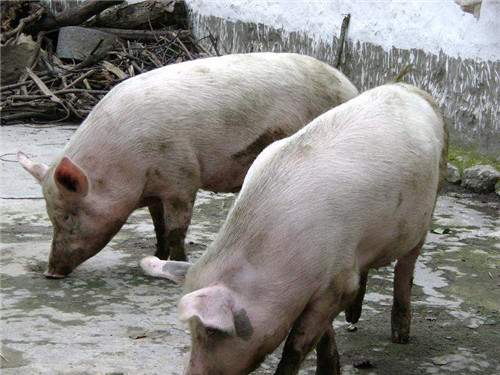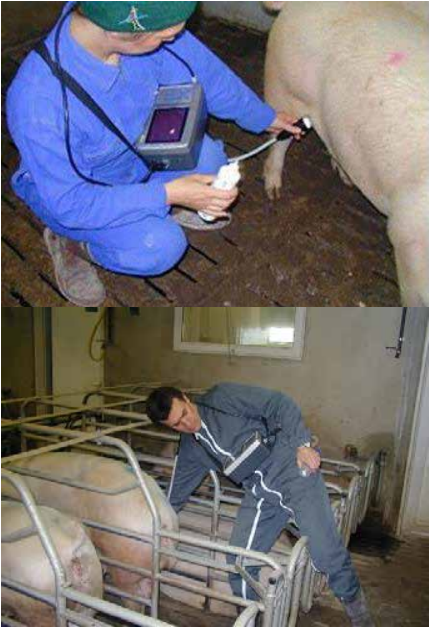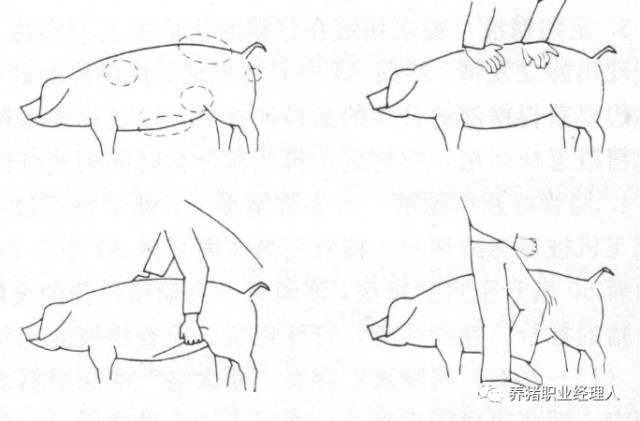What are the key points of sow perinatal management? You have to know!
Key points of sow perinatal management
There is a saying in the pig industry,"breeding is the leader, parturition is the key", parturition is the biggest stress of sows, and most piglet deaths also occur in the perinatal period, thus showing the importance of sow perinatal management. Perinatal management refers to the management of sows from birth bed to one week after delivery, and the importance of perinatal management cannot be overemphasized.
I. Prenatal management
1. Feeding amount and feeding method
Sows should start to reduce feed 3 days before parturition, preferably not less than 2 kg/day, which will reduce constipation and inflammation. If the feed is not reduced, the sudden decrease in abdominal pressure after delivery may cause agalactia in sows, thus affecting lactation in lactating sows.
2. Temperature and humidity
The optimum temperature for prenatal sows is 18-20℃ and humidity is 65-75%. If the humidity in winter is too high, lime can be sprinkled on the damp ground and replaced in time.
3. Preparation before birth
(1) Prepare insulation mat, hang infrared lamp in incubator, debug standby, turn on power supply 1-2 hours before delivery.
(2) Prepare clean towel (or cotton cloth), washbasin, paraffin oil, disinfectant (such as 0.1% potassium permanganate), 5% iodine tincture cotton ball, ear scissors, tail-cutting pliers, piglet weighing cart, blood vitamin, oxytocin, severe mixed infection, farrowing record form, etc.
4. Signs of sow before delivery
Vulva swelling, tail root collapse, breast swelling bright, sometimes can squeeze out a small amount of milk, restless, do not eat or lie down calmly, labor pain began, or dog sitting, frequent urination. When the last pair of nipples can squeeze out a large amount of concentrated milk, 1-2 hours later, will give birth, when the vulva exudes mucus or meconium, will give birth.

II. Childbirth, midwifery and artificial nursing
1. Sows give birth
Generally do not feed on the day, but supply sufficient water, encourage sows to stand up and drink.
2. Delivery
After the piglet is born, immediately wipe off the mucus in the mouth and nose of the piglet with a towel, and then wipe off the mucus on the body. After the umbilical cord stops beating, pull the blood in the umbilical cord into the piglet's abdomen, and then pinch the umbilical cord 3-4 cm away from the piglet with nails. Disinfect the broken end with 5% iodine tincture, and then put the piglet into the incubator. Because the most suitable temperature for newborn piglets is 34℃, while for sows it is 18-20℃, which is a pair of contradictions in itself. The environmental temperature in the delivery room should be mainly suitable for sows. The room temperature can rise to 23 ℃ at the beginning of farrowing, and piglets need to provide suitable temperature for small environment. Therefore, an incubator or heating plate must be provided.
Generally, about 30 minutes after the birth, the placenta is divided into two piles, and when the last end of the placenta forms a plug, all of them are produced. Some sows also give birth to piglets on one side of the uterine horn, discharge the placenta on this side of the uterine horn, and then discharge piglets on the other side of the uterine horn, and then discharge a pile of placenta. Note: Do not use your hands to pull the placenta hanging on the vulva of the sow, otherwise it will strain the birth canal of the sow, causing infection, fever, no food, no milk.
Within 24 hours after birth, piglet should be ear beating, weighing birth weight and litter weight, iron supplementation, dog teeth shearing, tail amputation and other routine operations. Some pseudorabies positive farms also need to give newborn piglets nasal immunization pseudorabies attenuated vaccine. It is worth mentioning that it is best to use electric tail-cutting pliers for tail-cutting, because it integrates tail-cutting, disinfection, hemostasis and other functions, and the operation is more convenient.
For piglets with feigned death symptoms, rescue them in time. Methods: (1) Lift piglet hind legs upside down and pat piglet back with hand until piglet cries;
(2) Apply alcohol to the nose of piglets to stimulate respiratory movement; judge fake dead pigs according to jumping movement at the base of umbilical cord.
3. Correct use of oxytocin:
If the sow successfully gives birth to the first normal piglet, normal observation and care, if the birth interval exceeds 45 minutes in the subsequent delivery process, 10 units of oxytocin can be injected, but the total injection should not exceed 20 units, so as not to cause endocrine disorders. This can greatly shorten the delivery time, reduce the litter number of stillbirths, promote the discharge of placenta and lochia, so that sows restore appetite as soon as possible after delivery, improve weaning piglets weight, shorten the time to slaughter.
4. Artificial birth
Normal farrowing of sows is to give birth to a piglet every 5-30 minutes, about 2.5-5 hours. If the birth interval exceeds 45 minutes, delivery is required.
The net bed behind the sow should be cleaned, the midwife's nails cut short and polished, and the hands and arms (up to the shoulders) washed.
Wear long-armed latex gloves, disinfect gloves and apply paraffin oil.
Roll your hand into a cone, palm facing the sow's back. Slowly insert the arm into the birth canal during intervals in sow labor. If the piglet hind legs are outward, pull the piglet hind legs out; if the piglet head is outward, grab the piglet chin with thumb and other four fingers and pull it out; if it still cannot be pulled out, pull the piglet out with the aid of midwifery rope; if two piglets are blocked in the birth canal in parallel, push the inner one back to the uterus and pull the outer one out. Do not pull the placenta, umbilical cord, vaginal wall and vaginal wall fat.
Sows that have been assisted to overproduce should be injected intramuscularly with large doses of antibiotics after farrowing. At the same time, postpartum health is added to feed to prevent postpartum infection, which can effectively prevent the occurrence of diseases such as endometriosis and make sows recover appetite as soon as possible after childbirth.
Warm tips: sow prenatal week feeding liquid multi-dimensional, can improve productivity, significantly shorten the delivery, significantly reduce the number of litter stillbirth.
5. Artificial nursing for birth
According to statistics, 52.1% of the deaths of piglets before weaning were caused by extrusion. Most of the extrusion deaths occurred within 24 hours after birth. In order to effectively reduce the mortality of piglets before weaning, special personnel must be arranged for sow delivery.
In order to reduce the burden of artificial nursing and facilitate the centralized management of post-parturition sows and postpartum piglets, cloprostenol can be injected in the morning of 114 days of gestation, which can control most pregnant sows to give birth in the next day.
III. Lactation
1. Feeding amount
Feed sows from the next day of parturition, feed 2 kg on the first day of feeding, feed rate increases by 0.5~0.8 kg per day, to reach the maximum on the seventh day, normal lactation of more than 10 piglets sows, in order to increase the lactation of sows, must always maintain the maximum feed intake of pigs. The amount of feed is usually determined according to the number of live piglets. The standard feed intake =2 kg +0.5 × the number of piglets N.
2. Feeding methods
Most farms are currently fed pellet feed. If labor is sufficient, it is best to use moist mixes. Compared with direct feeding dry powder feed, the moist mixed feed has the advantages of good palatability, reduced dust content in the air of piggery, and thus reduced the incidence of respiratory diseases in pigs. There are pig farms abroad that even use liquid feed lines in delivery rooms, which is more helpful to improve feed intake of nursing sows.
Related
- On the eggshell is a badge full of pride. British Poultry Egg Market and Consumer observation
- British study: 72% of Britons are willing to buy native eggs raised by insects
- Guidelines for friendly egg production revised the increase of space in chicken sheds can not be forced to change feathers and lay eggs.
- Risk of delay in customs clearance Australia suspends lobster exports to China
- Pig semen-the Vector of virus Transmission (4)
- Pig semen-the Vector of virus Transmission (3)
- Five common causes of difficult control of classical swine fever in clinic and their countermeasures
- Foot-and-mouth disease is the most effective way to prevent it!
- PED is the number one killer of piglets and has to be guarded against in autumn and winter.
- What is "yellow fat pig"? Have you ever heard the pig collector talk about "yellow fat pig"?



